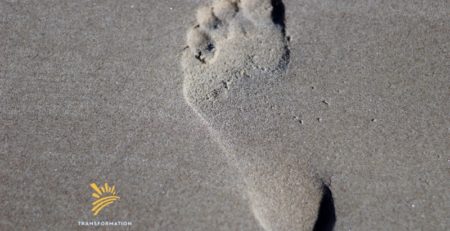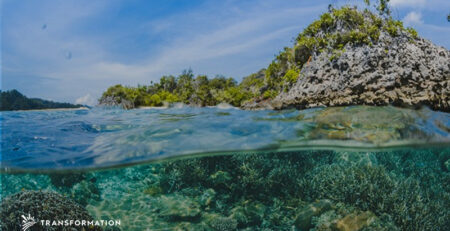Marine Conservation Strategies Aimed Toward Healthy Oceans
One of the many marine sciences, marine conservation is the practice of protecting and preserving ocean ecosystems and biodiversity. It’s not limited to the ocean; it also includes estuaries, mangroves, and other coastal habitats that are critical to marine life and under threat.
Conservation strategies are essential for ensuring the health and vitality of oceans, which are vital to the survival of many species and the overall well-being of the planet. These strategies focus on reducing human impacts on marine ecosystems, promoting sustainable use of marine resources, and protecting critical habitats and species.
Effective marine conservation strategies can incorporate multiple approaches and are tailored to the specific needs and conditions of the area in question. Collaboration between government, non-government organizations, industry, and local communities is often crucial for the success of marine conservation efforts. Conservation efforts should be integrated with other sectors, such as tourism and energy, based on the best science.
These strategies include:
Marine protected areas (MPAs)
MPAs are designated areas in the ocean where human activities, such as fishing and oil and gas extraction, are restricted or prohibited. This protects critical habitats such as coral reefs or kelp forests for marine species such as sea turtles or whales to thrive. These areas range from small, localized sites to large, multi-use regions.
In North America alone, there are over 1000 MPAs, including sanctuaries such as the Florida Keys Marine Sanctuary, which works to keep its coral reef ecosystem healthy. It also practices fishery management by allowing its fish stocks to grow in size and number.
Sustainable fishing practices
This includes catch limits, gear restrictions, seasonal closures, and habitat protections to ensure that fish populations are not overfished and that fishing doesn’t harm other marine life or habitats. It also includes measures to reduce bycatch, which is the unintentional capture of non-target species in fishing gear. For example, using selective fishing gear, such as turtle excluder devices, can help reduce the number of sea turtles caught in shrimp trawls.
Pollution reduction
Controlling pollution is crucial for maintaining healthy oceans. Pollution from sources such as oil spills, plastic waste, chemical waste, and nutrient runoff from agriculture harms ocean life and degrades the marine ecosystem. Implementing policies and regulations to reduce pollution and promoting public awareness and individual actions to reduce waste can help protect the ocean.
Climate change adaptation and mitigation
Climate change is a significant threat to the oceans, as it can lead to rising sea levels, ocean acidification, and changes in ocean currents and temperature. Adaptation strategies can include assisted migration or selective breeding to help marine species adapt to changing conditions. In contrast, mitigation strategies aim to reduce greenhouse gas emissions to slow the rate of climate change. Mitigation strategies include transitioning to clean energy.
Protection of endangered and threatened species
This includes measures such as captive breeding programs, habitat restoration, and the creation of conservation corridors to connect fragmented habitats.
Restoration and rehabilitation
This includes restoring degraded habitats, such as coral reefs and mangroves, and rehabilitating injured or sick marine animals. Habitat restoration can protect and enhance marine life and environments by removing debris and planting new coral reefs. Rehabilitation can also improve the overall ocean health, improve water quality and enhance fishing opportunities.
Community-based conservation
This approach involves working with local communities and stakeholders to manage and conserve marine resources. This can include sharing traditional ecological knowledge, education and outreach programs, involvement in decision-making processes, co-management agreements, and community-based monitoring programs.
Involving the communities helps ensure ocean conservation efforts are effective and sustainable.
Coastal development management
The construction of ports, harbors, and tourism infrastructure can negatively impact the ocean and its inhabitants. Careful planning and management of coastal development can minimize these impacts.
International cooperation
Oceans are a global resource that are shared by all nations. Many ocean conservation challenges, such as overfishing and pollution, require international cooperation to address effectively. This can include agreements and actions taken through the United Nations and other international organizations.
Marine spatial planning
This is developing a comprehensive management plan for the sustainable use and protection of marine resources. It involves identifying the different activities and services of the ocean, such as shipping lanes, fishing grounds, and conservation areas, and determining how they can coexist sustainably.
Promotion of sustainable tourism in marine environments
This includes measures such as the development of ecotourism guidelines and the establishment of sustainable tourism zones. The Galapagos Marine Reserve in Ecuador is a UNESCO World Heritage Site managed for sustainable tourism, with guidelines in place to minimize the impact of tourism on marine habitats and wildlife.
Research and monitoring
Scientific research on marine life and ecosystems and monitoring programs can help track the health of the oceans, identify areas of concern and track the effectiveness of conservation efforts. This information can inform and adjust conservation strategies as needed.
Education and outreach programs
This includes programs to engage local communities in conservation efforts and understanding marine conservation issues. Promoting public awareness of the importance of marine ecosystems and the threats they face is essential.
Summary
The ocean is one of the most invaluable natural resources that provide several critical economic and ecological benefits to the global community. Marine conservation strategies can help ensure that marine ecosystems continue to provide vital services to people and wildlife for generations to come. Effective marine conservation requires collaboration, integration with other sectors, and a commitment to equity and inclusion.





Leave a Reply